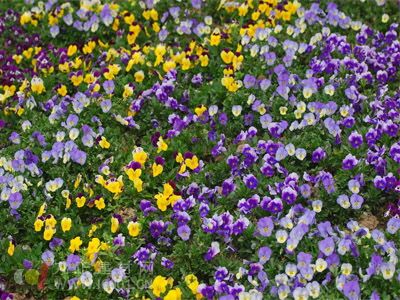1: To distinguish the requirements for light: 1. Positive flowers: hi light, such as magnolia, rose, pomegranate, plum, pansy, and scutellaria; 2. Neutral flowers: the requirements for light are not strict. Such as jasmine, osmanthus, and brocade; 3. Negative flowers: such as bamboo, monstera, green radish, rubber tree, bamboo raft, dragon white tree and so on. 2: According to the time required for lighting 1. Long-day sunshine flowers: more than 12 hours of sunshine per day, such as iris, aster, impatiens, etc.; 2. Chinese and Japanese flowers: such as carnation, rose, etc.; 3. Short-day flowers: Daily sunshine must be less than 12 hours. Such as poinsettia, chrysanthemum, etc. 3: temperature 1. Cold-resistant flowers: can endure low temperatures of about 20 degrees below zero. Such as Yingchun, jellyfish, eucalyptus, jade, clove, valerian, wisteria, etc.; 2. Semi-perennial flowers: can endure low temperatures of about 5 degrees, such as tulips, rose, chrysanthemum, pomegranate, peony, etc.; 3. Not cold-tolerant flowers: such as Wenzhu, Yiyelan, Strelitzia, Modified Leafwood, Poinsettia, Fusang, Calla Lily, White Orchid and Succulents. 4: The importance of water in flower planting 1. Pay attention to water quality: According to the magnesium salt and calcium, it is divided into hard water and soft water. It is better to water the flowers with soft water. Rainwater is the most ideal, followed by river water and pond water. Remember: Do not use dishwashing water or water with washing powder. Tap water should be used for drying for one day to make the chlorine in the water fully evaporate. 2. Pay attention to the water temperature: do not quench and heat up. 3. Water quantity: more spring, should be poured in the afternoon; summer foot, should be poured early and late; less pouring in autumn; winter according to the wet and dry of the basin, once a few times. 4. Watering Note: According to the season, the weather is different, and the plant preferences are mastered. In short, before watering, visually analyze the water shortage and re-water. 5: raise flowers and pay attention to the soil, do not harden the knot: 1. Add organic fertilizer; 2. Appropriate sand mixing; 3. Drainage and loose soil. 6: Family flowering and multi-purpose manure production method Use grass, deciduous, straw, etc., add appropriate amount of water, animal stool, human excrement and a small amount of lime, into a pit into a rectangular shape, cover it with soil, and cook for a certain period of time, both to kill insects and kill grass, and to make organic ingredients Decompose quickly. 7: Topdressing 1). Top dressing; 2). urea top dressing, also can be sprayed with urea water; 3). Potassium dihydrogen phosphate is beneficial to flower bud differentiation, and can also make flowers large and colorful; 4) For iron deficiency yellow leaves, spraying ferrous sulfate is best. Such as camellia, gardenia, and laughter; 5). Boron water can prevent the flower buds from falling, which is good for increasing the number of flowers and flowers; 6.) Pay attention to the amount of fertilizer, urea, potassium dihydrogen phosphate is 0.2%-0.3%, ferrous sulfate 0.3%-0.5%, boron is 0.05%--0.1%; 7) The top dressing time is usually 8-10 am or evening, do not ignore the spraying on the back of the leaves. 8:: Pest control for family flowers To prevent pests and diseases, we should master the principle of “preventing prevention as the mainstayâ€, strengthen management, and pay attention to the maintenance work of ventilation, light transmission, watering and fertilization. Make flowers and trees grow stronger and strengthen their ability to resist pests and diseases. Once the pests and diseases are found, it is necessary to take measures as soon as possible to achieve "prevention of treatment, treatment and treatment" to prevent spread. Pig Lighting,Pig Light Bulb,Pig House Lighting,Pig Farm Lighting Shenzhen AMB Technology Co., Ltd , https://www.birdscareled.com